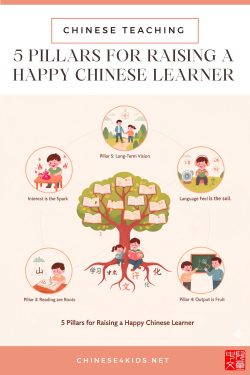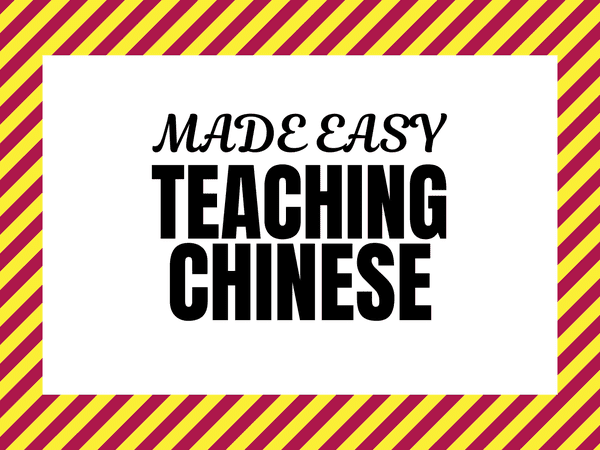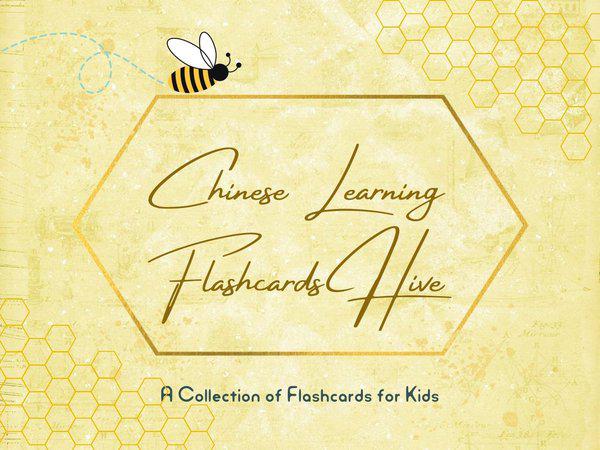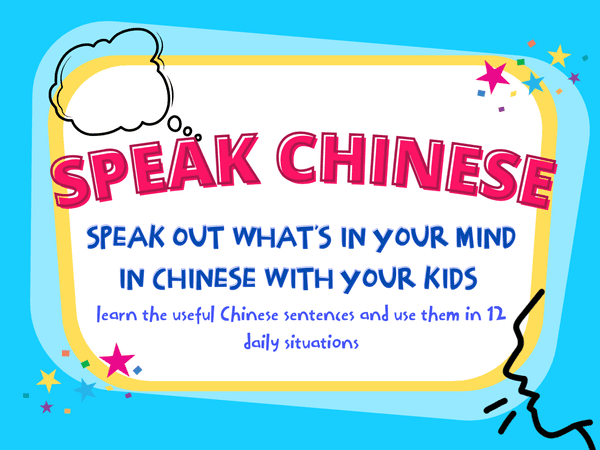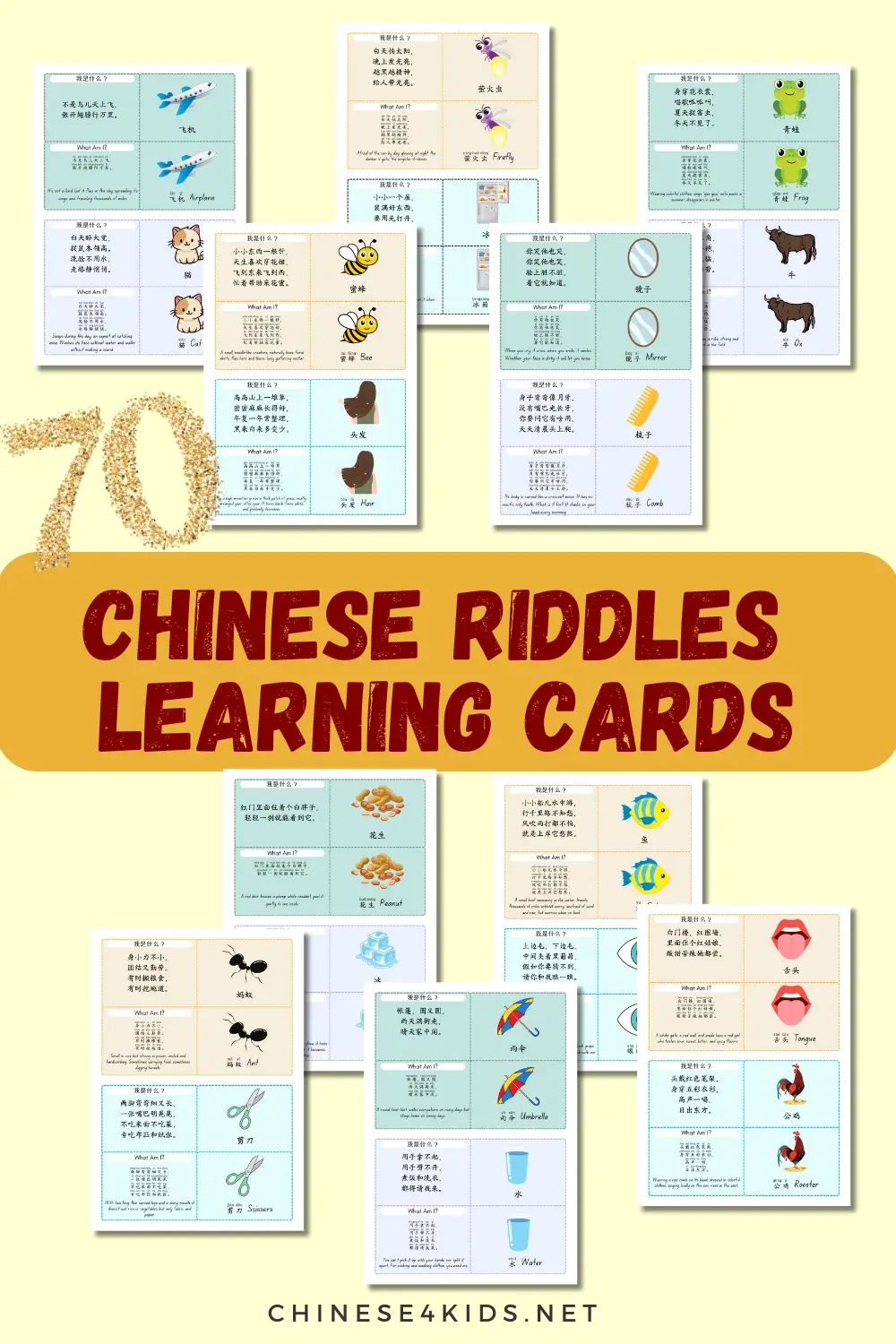
Home » Chinese learning activities for kids » 5 Pillars for Raising a Happy Chinese Learner
5 Pillars for Raising a Happy Chinese Learner
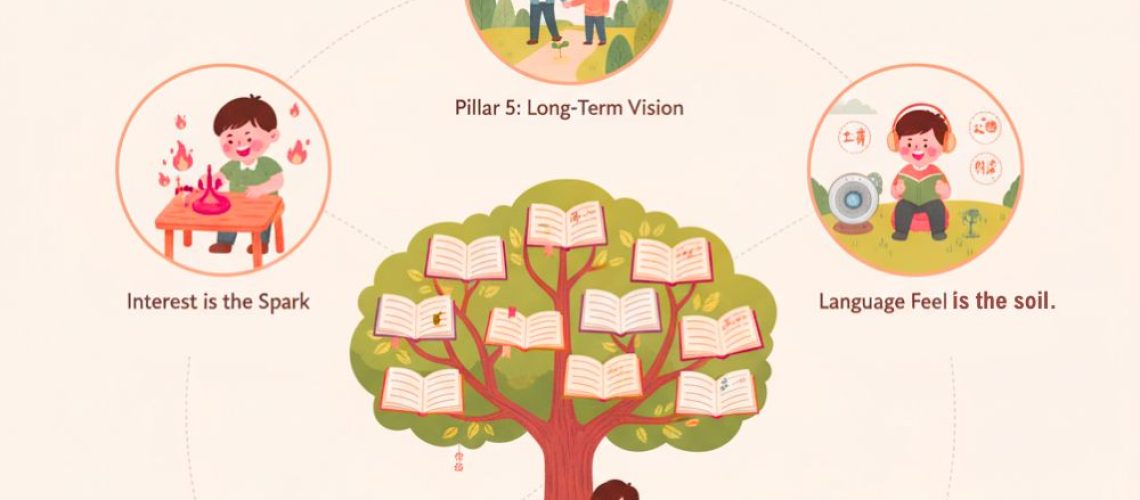
Is learning Chinese just about memorizing characters and passing tests? We don’t think so. For children, learning Mandarin should be a joyful journey of discovery, not a stressful race. It’s about connecting with a rich culture, developing a new way of thinking, and, most importantly, having fun! Let’s have a look at this parent’s guide to joyful Chinese learning
To help your child truly understand, use, and love the Chinese language, we’ve built our philosophy on five core pillars. Think of them as the foundation for a lifetime of happy learning.
Pillar 1: Interest is the Spark ✨
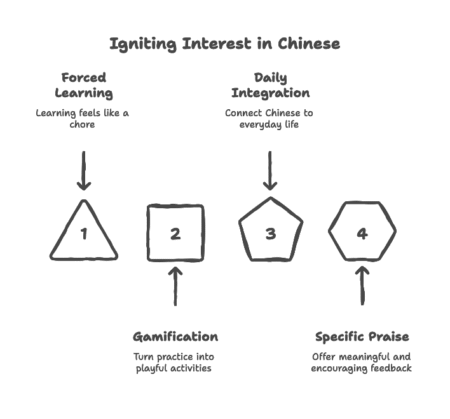
Turn “have to” into “want to” by making learning fun.
Forcing a child to copy characters is the fastest way to make them dislike Chinese. But when you spark their curiosity, that interest becomes a powerful engine for learning that never runs out of fuel.
-
Swap chores for games. 🎲
Instead of “time to practice,” say “time to play!” Use character blocks, sing along to nursery rhymes, or go on a “character hunt.” When learning the character for fire, 火 (huǒ), you can shape it out of red play-doh and then search for all the things in your house that have to do with fire, like a candle or the stove.
-
Weave Chinese into daily life. 🧺
At the grocery store, point out the signs for 西红柿 (xī hóng shì – tomato) or 黄瓜 (huáng guā – cucumber). While cleaning up, you can say, “积木 (jī mù – the blocks) go in the box.” This helps your child see that Chinese isn’t just a subject—it’s a tool for understanding the world around them.
-
Give specific and encouraging feedback.
Instead of a generic “Good job!” try something like, “Wow, you used the word 闪闪 (shǎn shǎn – sparkling) to describe the stars. That’s a beautiful choice!” Meaningful praise builds confidence and a genuine love for the language.
Pillar 2: Language Feel is the Soil 🌱
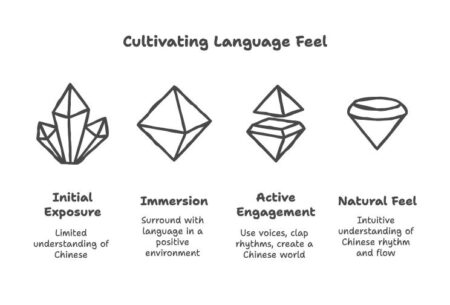
Nurture a natural sense of the language through immersion.
You can’t learn the rhythm and flow of a language just by memorizing grammar rules. A natural “feel” for Chinese comes from being surrounded by it in a positive, low-pressure environment.
-
Provide lots of listening and reading. 🎧📚
Start with catchy nursery rhymes like 《小白兔》(Little White Rabbit) for toddlers to build sound sensitivity. As they grow, move on to audiobooks and classic stories. Reading together is crucial. Use different voices for characters and clap out the rhythm of simple poems, like Li Bai’s “Quiet Night Thoughts” (床前明月光, yí shì dì shàng shuāng). This helps them feel the musicality of the language.
-
Create a mini “Chinese world” at home.
You don’t have to be a native-speaking family to do this! Set aside a “Chinese Hour” each day where you all try to speak the language. Create a cozy “Chinese Nook” with picture books, character cards, and art supplies, making the language a visible and accessible part of your home.
Pillar 3: Reading & Writing are the Roots ✍️
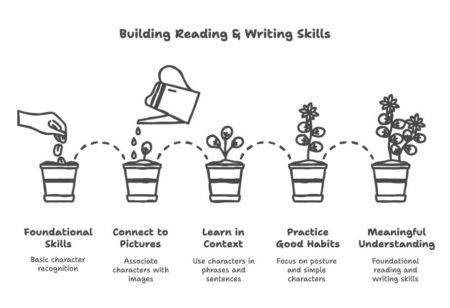
Build foundational skills with meaning and context.
Learning to read and write characters is essential, but it shouldn’t be about endless, mindless copying. It’s about understanding the logic and story behind each character.
-
Connect characters to pictures.
Start with pictographs, which are like simple drawings. Show your child how 日 (rì) looks like the sun, 月 (yuè) looks like the moon, and 人 (rén) looks like a person walking. This “shape association” makes characters much easier to remember.
-
Learn words in context, not isolation.
When you learn the character for cloud, 云 (yún), don’t stop there. Immediately introduce phrases like 白云 (bái yún – white cloud) and 乌云 (wū yún – dark cloud). Then, make a simple sentence: “蓝蓝的天上有白云 (Lán lán de tiān shàng yǒu bái yún – There are white clouds in the blue sky).” This teaches them how words actually work.
-
Start writing with good habits.
Correct posture is key to avoiding fatigue and bad habits later on. Use a pencil grip and the simple reminder: “背挺直, 脚放平 (Bèi tǐng zhí, jiǎo fàng píng – Back straight, feet flat).” Start with simple characters like 一 (yī), 十 (shí), and 人 (rén) before moving on to more complex ones. For young kids, 10 minutes of focused practice is far better than an hour of sloppy work.
Pillar 4: Expression is the Fruit 🗣️
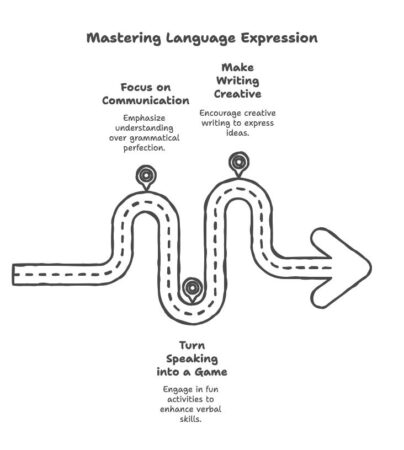
Encourage them to use what they’ve learned, mistakes and all.
The whole point of learning a language is to communicate! Creating a safe space for your child to express themselves—both by speaking and writing—is how they turn passive knowledge into an active skill.
-
Focus on communication, not perfection.
If your child says, “I eat big apple yesterday,” resist the urge to correct them immediately. First, respond to what they said: “That sounds delicious! Was it sweet?” Later, you can gently model the correct way: “When we talk about yesterday, we can say, ‘I ate (吃了 chī le) a big apple.’ Adding 了 (le) helps people know it already happened.”
-
Turn speaking into a game.
Have a weekly “family story time” where your child retells a story from a picture book they read. Play word games like “word chain” (接龙 jiē lóng) to build vocabulary and quick thinking.
-
Make writing a creative outlet.
For beginners, start with “draw and write.” Ask them to draw something they did today and write one simple sentence underneath, like “今天我玩了滑梯 (Jīn tiān wǒ wán le huá tī – Today I played on the slide).” The goal is to get their ideas down on paper, not to write a perfect essay.
Pillar 5: A Long-Term View is the Compass 🧭
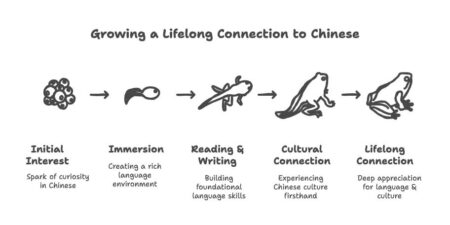
Play the long game and focus on connection over competition.
Learning Chinese is a marathon, not a sprint. Getting bogged down in numbers—how many characters they know by age 3, or how many poems they’ve memorized by age 5—can burn a child out and strip the joy from the process.
-
Let go of number-driven anxiety. ❤️
It’s more important that your child willingly picks up a Chinese book than it is for them to know 1,000 characters. The affinity they develop for the language will last a lifetime, long after the flashcard drills are forgotten.
-
Connect language to culture.
When you learn the character for spring, 春 (chūn), read a poem about spring and plant a seed together. During the Mid-Autumn Festival, eat mooncakes and tell the story of Chang’e. Culture gives language its heart and makes it come alive.
-
Be a partner, not a supervisor.
The most powerful tool you have is your own engagement. Read with your child. Learn alongside them. Even ask them to teach you! When your child sees that you value and enjoy the language, they will too.
Learning Chinese is like growing a tree. Interest is the seed, immersion is the soil, reading and writing are the roots, and expression is the fruit. With patience, encouragement, and a focus on joy, your child will not only learn a language—they will gain a lifelong connection to a vibrant culture.
If you like this article, share it!
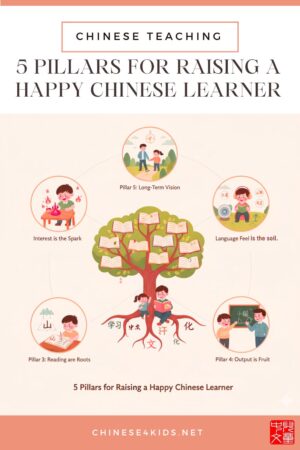
You May Also Be Interested:
- Chinese4kids Membership – a portal for busy Chinese teachers and parents
- Chinese learning flashcards Hive – a flashcards library that with regular additions of new quality Chinese learning flashcards
- Chinese learning worksheets collection – Also a part of Chinese4kids membership, this collection is for teachers and parents who want to have access to engaging worksheets and activity sheets created for kids learning Mandarin Chinese as an additional language
- Speak Chinese with Kids Course
- Chinese Vocabulary Made Easy Course
Recent Posts
Join Our Membership
Enroll to A Course
Buy An eBOOK
Our Posts
